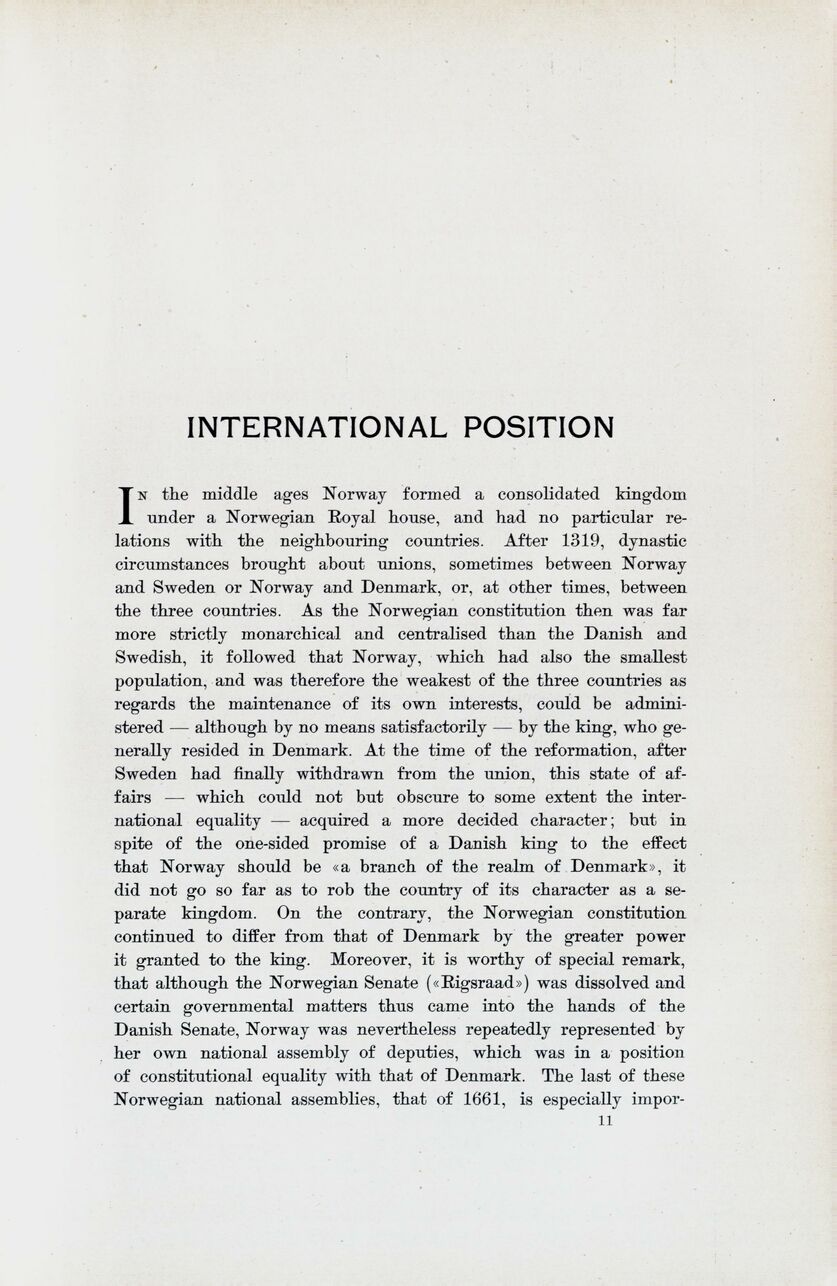
Full resolution (JPEG)
- On this page / på denna sida
- International Position, by Ebbe Hertzberg

<< prev. page << föreg. sida << >> nästa sida >> next page >>
Below is the raw OCR text
from the above scanned image.
Do you see an error? Proofread the page now!
Här nedan syns maskintolkade texten från faksimilbilden ovan.
Ser du något fel? Korrekturläs sidan nu!
This page has been proofread at least once.
(diff)
(history)
Denna sida har korrekturlästs minst en gång.
(skillnad)
(historik)
INTERNATIONAL POSITION
In the middle ages Norway formed a consolidated kingdom
under a Norwegian Royal house, and had no particular
relations with the neighbouring countries. After 1319, dynastic
circumstances brought about unions, sometimes between Norway
and Sweden or Norway and Denmark, or, at other times, between
the three countries. As the Norwegian constitution then was far
more strictly monarchical and centralised than the Danish and
Swedish, it followed that Norway, which had also the smallest
population, and was therefore the weakest of the three countries as
regards the maintenance of its own interests, could be
administered — although by no means satisfactorily — by the king, who
generally resided in Denmark. At the time of the reformation, after
Sweden had finally withdrawn from the union, this state of
affairs — which could not but obscure to some extent the
international equality — acquired a more decided character; but in
spite of the one-sided promise of a Danish king to the effect
that Norway should be «a branch of the realm of Denmark»,
did not go so far as to rob the country of its character as a
separate kingdom. On the contrary, the Norwegian constitution
continued to differ from that of Denmark by the greater power
it granted to the king. Moreover, it is worthy of special remark,
that although the Norwegian Senate («Rigsraad») was dissolved and
certain governmental matters thus came into the hands of the
Danish Senate, Norway was nevertheless repeatedly represented by
her own national assembly of deputies, which was in a position
of constitutional equality with that of Denmark. The last of these
Norwegian national assemblies, that of 1661, is especially
<< prev. page << föreg. sida << >> nästa sida >> next page >>
Project Runeberg, Sun Dec 10 21:09:24 2023
(aronsson)
(diff)
(history)
(download)
<< Previous
Next >>
https://runeberg.org/norparis/0173.html



